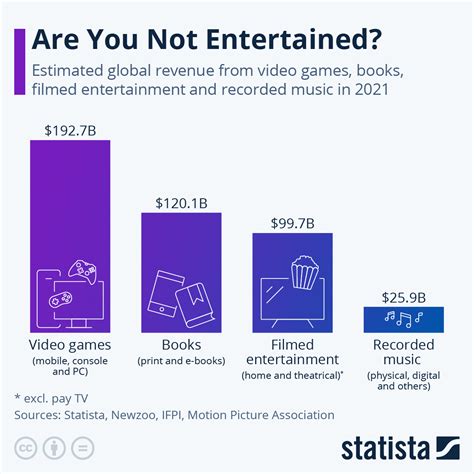Breaking News


Popular News


Explore the rise of hypercasual games, their factors contributing to popularity, development, design, monetization strategies, and impact on the gaming industry.In recent years, a new trend has taken the gaming industry by storm – hypercasual games. These simplistic, easy-to-play games have skyrocketed in popularity, captivating a wide audience of gamers across the globe. But what exactly are hypercasual games, and what is fueling their rapid rise in the gaming world? In this blog post, we’ll delve into the phenomenon of hypercasual games, exploring their defining characteristics, the factors contributing to their popularity, and the impact they have had on the gaming industry as a whole. We’ll also take a closer look at the development process of hypercasual games, including the design and user experience considerations that make them so engaging. Additionally, we’ll discuss the monetization strategies that developers use to capitalize on the success of hypercasual games. Join us as we uncover the rise of hypercasual games and the implications they have for the future of gaming.
Contents

Hypercasual games are a genre of video games that are designed to be easy to pick up and play, typically featuring simple gameplay mechanics and minimalistic graphics. These games are specifically designed to be accessible to a wide audience, including casual gamers who may not have much experience with video games.
One of the key characteristics of hypercasual games is their simple and straightforward gameplay. This usually involves a single mechanic or objective that players can easily grasp, such as tapping the screen to make a character jump or swiping to move objects around the screen. This simplicity is a major factor in the widespread appeal of hypercasual games, as it allows virtually anyone to start playing without the need for tutorials or complicated instructions.
Another defining feature of hypercasual games is their minimalistic visual style. These games typically use simple shapes, colors, and animations, which not only makes them visually appealing but also helps to keep the focus on the gameplay itself. The combination of simple gameplay and visuals makes hypercasual games easy to understand and approachable for players of all ages and experience levels.

Hypercasual games have become immensely popular in the gaming industry in recent years, and there are several factors contributing to their popularity. One of the main reasons for their widespread appeal is their simplicity and accessibility. These games are easy to play and do not require a significant time commitment, making them ideal for casual gamers looking for quick entertainment.
Another key factor contributing to the popularity of hypercasual games is their minimalistic design and user-friendly interface. The simple graphics and intuitive gameplay make these games appealing to a wide audience, including both experienced gamers and newcomers to the gaming world.
Furthermore, the rise of hypercasual games can also be attributed to the advancements in mobile technology. With the increasing capabilities of smartphones and tablets, more people than ever have access to mobile gaming, which has fueled the demand for hypercasual titles.
In addition, the monetization strategies employed by hypercasual game developers have played a significant role in their popularity. These games often utilize ad-based monetization models, allowing players to enjoy the games for free while developers generate revenue through in-game advertisements.

Developing Hypercasual Games involves creating simple yet addictive gameplay experiences that are easy for users to pick up and play. One of the key factors in the development process is to focus on intuitive controls and minimalistic design, allowing for quick and engaging gameplay. Developers must also consider the platform and audience when creating hypercasual games, as they are typically designed for mobile devices and targeted towards a wide range of users.
When developing hypercasual games, it’s important to prioritize rapid prototyping and testing to quickly iterate and refine the game mechanics. This iterative development process allows developers to experiment with different concepts and gameplay elements to find the optimal balance of simplicity and fun. Additionally, leveraging data-driven insights and player feedback can help optimize the game’s performance and user engagement.
Furthermore, developing hypercasual games requires a deep understanding of the psychological and behavioral aspects of gaming, as well as an awareness of current trends and market demand. By staying attuned to user preferences and industry developments, developers can create games that resonate with a wide audience and capitalize on emerging opportunities within the hypercasual gaming space.
In summary, developing hypercasual games involves refining gameplay mechanics, leveraging data-driven insights, and staying abreast of industry trends to create compelling and accessible gaming experiences.

When it comes to hypercasual games, the design and user experience are key factors that contribute to their success. The design of these games is usually simple, with clean and minimalistic visuals that appeal to a wide audience. The user experience is also crucial, as these games are meant to be easy to pick up and play, requiring no tutorials or complicated instructions.
One of the main design strategies for hypercasual games is to ensure that the game mechanics are intuitive and easy to grasp. This often involves using familiar concepts and controls that players are already familiar with. By doing so, game developers can create an experience that is immediately accessible and enjoyable for a wide range of players.
Additionally, the user interface of hypercasual games is designed to be uncluttered and free from distractions. This allows players to focus on the core gameplay and enjoy a seamless and immersive experience. The use of bright colors and simple shapes also helps to enhance the overall design and make the game more visually engaging.
Overall, the design and user experience of hypercasual games play a crucial role in their popularity. By focusing on simplicity, intuitiveness, and visual appeal, developers can create games that resonate with players and keep them coming back for more.

Monetization strategies for hypercasual games involve finding ways to generate revenue from the game while maintaining a positive user experience. One common strategy is to include non-intrusive advertisements within the game. These ads can be displayed between game levels or during natural breaks in gameplay, allowing players to engage with the ad without disrupting their gaming experience. This approach can be effective for generating revenue without alienating players.
Another popular strategy for monetizing hypercasual games is the use of in-app purchases. This may include offering players the option to purchase additional lives, power-ups, or cosmetic items to enhance their gameplay experience. By providing these optional purchases, game developers can generate revenue from players who are willing to invest in their gaming experience, while still allowing non-paying players to enjoy the game.
Additionally, some hypercasual games implement a subscription-based model, where players can pay a monthly fee for access to additional content, features, or benefits within the game. This recurring revenue stream can provide a consistent income for developers and publishers, while also providing value to players who are willing to invest in the game long-term.
| Monetization Strategy | Description |
|---|---|
| Advertisements | Non-intrusive ads displayed between game levels or during natural breaks in gameplay |
| In-App Purchases | Optional purchases of lives, power-ups, or cosmetic items to enhance gameplay |
| Subscription Model | Monthly fee for access to additional content, features, or benefits within the game |
Overall, successful monetization strategies for hypercasual games should prioritize the user experience while still generating revenue for developers and publishers. By implementing non-intrusive ads, in-app purchases, or a subscription model, game creators can strike a balance between profitability and player satisfaction, ensuring the continued success of their hypercasual games.

The rise of hypercasual games has had a significant impact on the gaming industry in recent years. These games, known for their simplistic gameplay and easy accessibility, have revolutionized the way we think about gaming. With their emphasis on quick, pick-up-and-play experiences, hypercasual games have attracted a new audience of casual gamers, many of whom were previously not interested in traditional gaming.
Furthermore, the success of hypercasual games has prompted traditional game developers to rethink their approach. Many companies have started to incorporate hypercasual elements into their games, focusing on simple mechanics and intuitive controls. This shift in game design has had a profound impact on the overall landscape of the gaming industry, leading to an increased focus on user experience and accessibility.
Additionally, the popularity of hypercasual games has ushered in a new era of game monetization strategies. With their emphasis on short, ad-supported gameplay sessions, hypercasual games have introduced new ways for developers to generate revenue. This has forced traditional game developers to reevaluate their own monetization models, leading to the implementation of new monetization strategies that cater to the changing preferences of gamers.
In conclusion, the rise of hypercasual games has had a profound impact on the gaming industry, influencing everything from game design to user experience to monetization strategies. As the popularity of hypercasual games continues to grow, it is clear that their impact on the gaming industry will only continue to expand in the future.

What are hypercasual games?
Hypercasual games are lightweight, easy-to-play mobile games that require minimal time and effort from the player. They often feature simple mechanics and are designed for quick, pick-up-and-play sessions.
Why are hypercasual games becoming popular?
Hypercasual games are becoming popular because they appeal to a wide audience, including casual gamers and non-gamers. They are easy to understand and offer instant gratification, making them perfect for the on-the-go lifestyle of modern consumers.
What sets hypercasual games apart from other mobile games?
Hypercasual games stand out from other mobile games due to their simplistic design and intuitive gameplay. They focus on providing a fun and addictive experience without the need for complex storylines or high production values.
How do hypercasual games make money?
Hypercasual games typically make money through in-game advertisements and microtransactions. They often offer optional ads and in-game purchases as a way for players to enhance their experience or progress more quickly.
Are hypercasual games here to stay?
It’s likely that hypercasual games will continue to be a prominent trend in the gaming industry. Their accessibility and appeal to a broad audience make them a sustainable and profitable market segment for developers.
What are some popular hypercasual games?
Some popular hypercasual games include ‘Helix Jump,’ ‘Snake vs Block,’ ‘Flappy Bird,’ ‘Subway Surfers,’ and ‘Draw In.’ These games have amassed millions of downloads and have become widely recognized in the mobile gaming space.
How can developers create successful hypercasual games?
Developers can create successful hypercasual games by focusing on simple mechanics, addictive gameplay, and minimalistic design. It’s important to prioritize user retention and engagement through frequent updates and gameplay improvements.